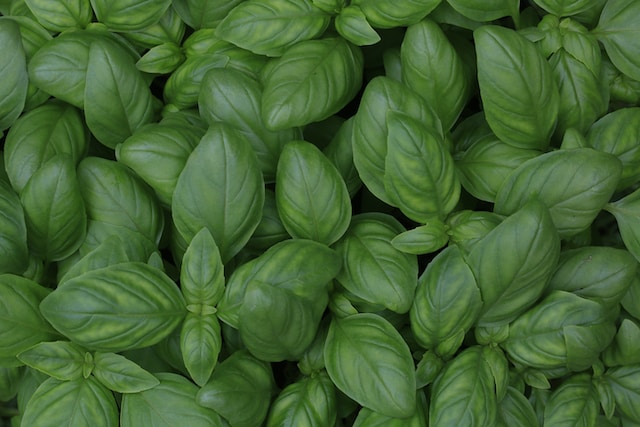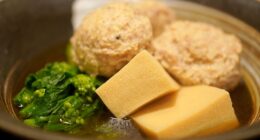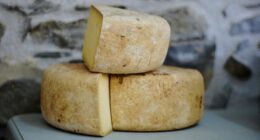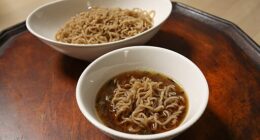Basil is a milder herb with a sweet fragrance that goes well with Italian cuisine, while Thai basil has a spicier flavor profile that complements Asian dishes.
Basil
(Photo by Markus Spiske on Unsplash )
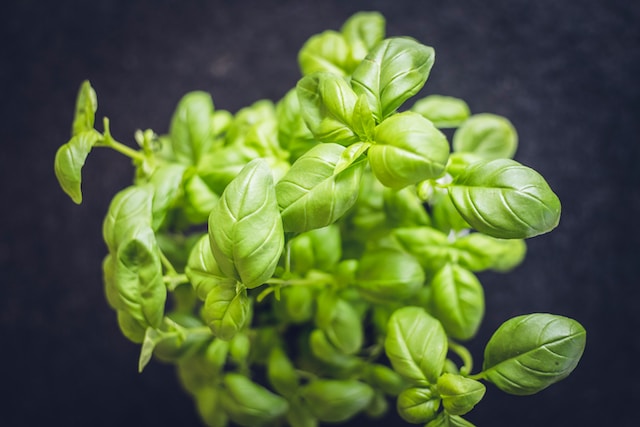
Basil, also known as sweet basil or Genovese basil, is a popular herb in Mediterranean cuisine. It belongs to the mint family and has a subtle peppery taste with hints of sweetness. Basil is commonly used fresh or dried in various dishes such as pasta sauces, pizzas, salads, and soups.
Basil contains essential oils that give it its distinct aroma and flavor. These oils can vary based on the species of basil but usually include eugenol, linalool, and estragole. This herb has several health benefits too; it’s rich in antioxidants that help fight inflammation and may lower the risk of chronic diseases.
Growing basil at home is easy; all you need is a warm climate and well-draining soil with plenty of sunlight. The best time to harvest your basil plants is when they’re young to promote more growth throughout the season.
Whether you’re cooking classic Italian dishes like Margherita pizza or experimenting with new recipes incorporating this versatile herb into your meals will add depth and complexity to any dish!
Thai Basil
(Photo By Jnzl’s Photos on Flickr)
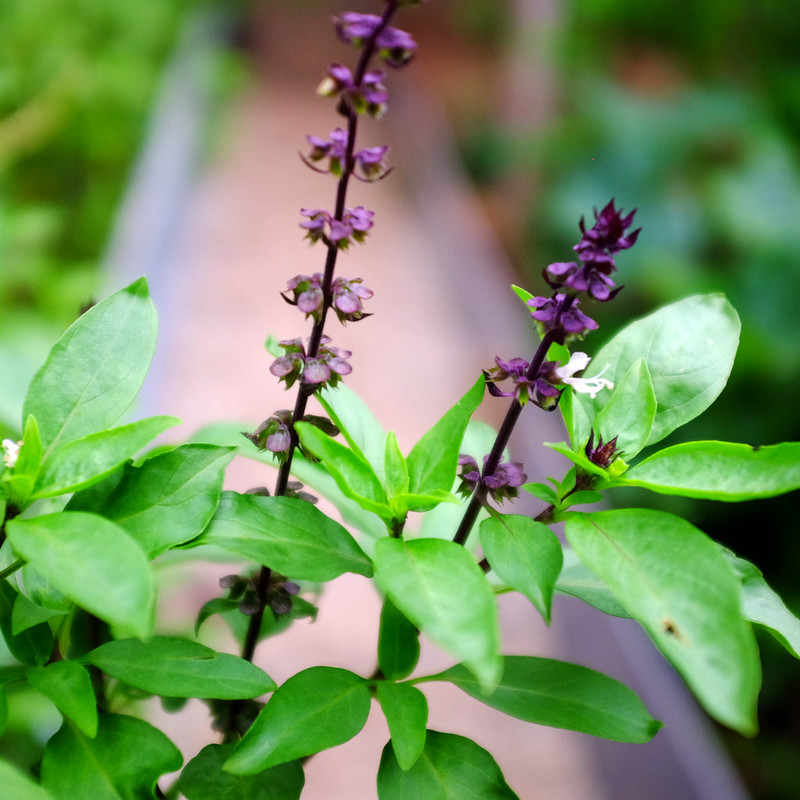
Thai basil is a type of herb native to Southeast Asia, commonly used in Thai and Vietnamese cuisine. Compared to regular sweet basil, it has a more pronounced anise or licorice flavor with hints of mint and pepper. It also has a slightly purple stem and pointed leaves that are often used as garnish for dishes.
In traditional Thai cooking, fresh Thai basil is added towards the end of cooking or as a garnish because it can easily lose its flavor when cooked for too long. Some popular dishes that use Thai basil include stir-fried chicken with holy basil (pad kra pao gai), green curry (gaeng keow wan) and tom yum soup.
Aside from being delicious and flavorful, this herb also offers health benefits such as anti-inflammatory properties due to its high content of eugenol. It’s also believed to have antibacterial properties that can help fight off certain infections.
If you’re looking for something new and exciting to add to your culinary repertoire, give Thai basil a try!
Basil Vs. Thai Basil – Key differences
Basil and Thai basil both belong to the same family of herbs but differ in taste, appearance, and aroma. Basil has a sweet and slightly peppery taste with notes of clove and anise. On the other hand, Thai basil has a more intense flavor profile with hints of licorice, mint, and cinnamon.
In terms of appearance, basil leaves are typically green or purple with smooth edges while Thai basil leaves have jagged edges and can be either green or purple. Additionally, Thai basil has a stronger aroma than regular basil due to its essential oils.
Another key difference between these two herbs is their use in cooking. While regular basil is commonly used in Italian cuisine like pasta sauces and pesto sauce; Thai basil is used more often in Southeast Asian dishes such as curries, stir-fries or salads.
Both types of basils are versatile herbs that can add unique flavors to many different dishes. It’s important to consider which one would work best for your specific recipe based on their distinct characteristics before substituting them interchangeably
How to Use Thai Basil?
Thai basil is a versatile herb that can be incorporated into various dishes. Its sweet and spicy flavor makes it perfect for Asian cuisine, but it can also add a unique twist to your everyday meals. Here are some ways you can use Thai basil in your cooking:
- Use as a garnish: The delicate leaves of Thai basil make for an attractive garnish on your salads, soups or curries.
- Make pesto: Instead of using traditional Italian basil, try making pesto with Thai basil instead. It will give your pasta or sandwiches a new dimension of flavor.
- Add to stir-fries: Stir-frying is one of the most common methods used in Asian cuisine, and Thai basil pairs perfectly with vegetables and protein cooked this way.
- Infuse oil or vinegar: Steep fresh Thai basil leaves in oil or vinegar overnight to infuse the flavors into these ingredients before using them in dressings or marinades.
Thai Basil adds depth and aroma to dishes without overpowering other flavors . So experiment with different ways that suit you best !
Can I substitute basil for Thai basil?
If you’re looking to cook up a Thai dish but don’t have any Thai basil on hand, you may be wondering if it’s possible to substitute regular basil. While both types of basil share some similarities, they do have distinct differences in taste and aroma.
Thai basil has a stronger anise-like flavor with hints of licorice, while regular basil has a more subtle sweet and spicy flavor. The two herbs also differ in appearance: Thai basil leaves are narrower and pointier than those of regular basil.
While substituting one for the other won’t give you an identical result, it can still work depending on the recipe. If you’re making something that requires the unique flavor profile of Thai Basil (such as Pad Kra Pao or Tom Yum Soup), try using some combination of mint, cilantro, or fennel instead.
On the other hand, if your recipe only calls for small amounts of Thai Basil (like garnishing dishes) then using regular basil should be just fine. Ultimately it will come down to personal preference and experimentation in finding what works best for your specific dish.
Is Tulsi similar to Thai basil?
Tulsi and Thai basil may look similar in appearance, but they are actually different herbs with distinct flavors and properties. Tulsi, also known as Holy Basil, is a sacred herb in India that has been used for thousands of years in Ayurvedic medicine. It has a sweet and spicy flavor with notes of peppermint and clove.
Thai Basil, on the other hand, is commonly used in Southeast Asian cuisine for its anise-like flavor. It has a strong licorice taste with hints of mint and citrus.
While both Tulsi and Thai basil have medicinal benefits such as anti-inflammatory properties and aiding digestion, they cannot be substituted for each other due to their unique tastes. However, if you can’t find Thai basil at your local grocery store or market, you can substitute it with regular sweet basil without compromising too much on the flavor profile.
While Tulsi may share some similarities with Thai basil such as appearance and certain health benefits, their distinct flavors set them apart from each other.
Spices
Spices are an essential part of any cuisine. They add flavor, aroma and color to dishes and can bring a dish from plain to extraordinary. Spices are typically made from the seeds, fruits, roots or bark of plants and come in both whole forms and ground up powders.
There is a wide variety of spices available worldwide, each with its unique taste profile that enhances savory or sweet dishes. Some popular examples include cinnamon for sweetness, cumin for earthy flavors, turmeric for color and depth of flavor, paprika for smokiness while black pepper adds heat.
Spices have been used throughout history not only as culinary ingredients but also as medicines due to their anti-inflammatory and antioxidant properties. Additionally, certain spices like ginger have been known to aid digestion while others like garlic help boost immunity.
When using spices in cooking it’s important always to use fresh ones because they lose potency over time leading to bland-tasting food. In general, whole spices have a longer shelf life than pre-ground ones so if possible buy them whole then grind yourself when you need them.
In summary, incorporating different spice combinations into your cooking can take your meals to the next level by adding flavor complexity beyond salt and pepper alone.
Herbs
Herbs are a type of plant that has culinary, medicinal or spiritual uses. They have been used for centuries in various cultures around the world and come in various forms such as fresh, dried or powdered. Some common herbs include basil, parsley, rosemary and thyme.
One of the benefits of using herbs is their ability to add flavor to dishes without adding extra calories or unhealthy additives. For example, adding basil to tomato sauce can enhance its taste without the need for added salt or sugar.
In addition to their culinary uses, many herbs have also been found to have medicinal properties. For instance, chamomile tea is known for its relaxing effects while ginger can help with nausea and digestion issues.
Herbs are often used in traditional medicine practices such as Ayurveda and Traditional Chinese Medicine (TCM). These practices use specific combinations of herbs to treat various ailments and promote overall well-being.
Incorporating more herbs into your diet can be a simple way to boost both flavor and health benefits in your meals.
Featured Image By – Rob Pumphrey on Unsplash
